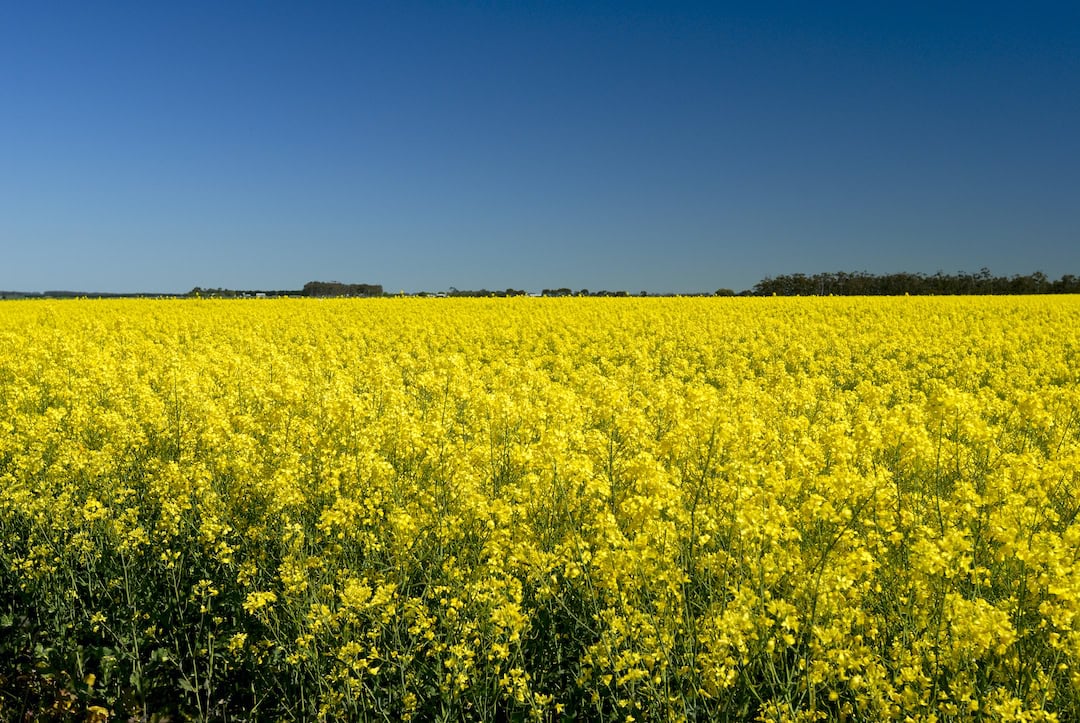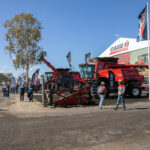The NSW Farmers team will be heading to Gunnedah next week to help celebrate to…
NSW winter crops set for record yields, but farmers urged to stay cautious

National crop yield forecast for 24 per cent increase in 2024�25, but historical errors mean farmers should manage expectations.
Farmers are advised to remain cautiously optimistic in light of the latest winter crop report from the Australian Bureau of Agricultural and Resource Economics and Sciences (ABARES).
According to the ABARES report, winter crop production in NSW was predicted to rise by 36 per cent to 15 million tonnes in 2024�25, marking a 28 per cent increase above the 10-year average to 2023�24.
Winter crop yields were forecast to rise by 24 per cent to 2.5 tonnes per hectare in 2024�?25 (this was 23 per cent above the 10-?year average to 2023�?24).
The optimistic forecast was attributed to an excellent start to the winter cropping season nationally, allowing most growers to fully achieve their robust planting goals.
However, NSW Farmers economist Samuel Miller said it was always wise to be cautiously optimistic when it came to forecasts released by ABARES.
�ABARES claimed that winter crop yields are forecast to rise by 24 per cent, which sounds positive. However, looking back at the last 25 years of ABARES forecasts, the median forecast error is around plus or minus 18 per cent. Putting that potential 24 per cent increase in context helps,� Mr Miller said.
�It�s likely to be a positive year for farmers, but with all forecasts, it’s essential to be mindful of potential errors. You can never perfectly predict the future. The increased production is likely to offset lower prices currently being seen in Australia. ABARES also mentions that, barring any major issues, wheat prices are forecast to remain low for the remainder of the year. However, that comes with the warning of potential unforeseen global issues.�
Samuel Miller, NSW Farmers economist
�Wheat prices, particularly in the last couple of years, have been quite volatile due to geopolitical tensions around the world. It’s important to highlight the crisis in Eastern Europe, especially in Ukraine. The situation remains unpredictable, and developments there or elsewhere could significantly impact global prices.�

According to the ABARES report, the area planted to winter crops in NSW was projected to grow by 10 per cent to 6.1 million hectares in 2024�25, which was 10 per cent above the 10-year average. Chickpea plantings were experiencing the largest percentage increase year-on-year in NSW this season, similar to trends in Queensland.
The increase in wheat and barley planting reflected the above-average subsoil moisture across much of NSW at the time of this forecast. This expansion included areas that were not planted last season due to dry conditions.
However, drier conditions during autumn and lower soil moisture levels in some southern cropping regions�where canola was predominantly grown�had led to a modest 1 per cent year-on-year decrease in the area planted to canola.
Canola, like wheat, was among the top three crop categories and was expected to have a strong year.
Mr Miller said the area planted was predicted to maintain its historical trajectory, which was a positive sign.
�Chickpeas have seen significant growth over the past decade. International markets have opened up, and experts predict that the area dedicated to chickpeas this year will increase by 100 per cent over last year’s. This surge is largely due to the Indian government’s suspension of tariffs earlier this year,� Mr Miller said.
�The same situation applies to lentils, which saw a substantial increase in NSW production during 2019-20, also driven by tariff suspensions and poor harvests in India. If these conditions persist, we could see continued strong growth and diversification of our winter crops, particularly in commodities that are in demand from India, an emerging middle-class economy on the global stage.”

In the Riverina region, the situation varied significantly depending on location. Glen Andreazza, a grain farmer from Griffith, detailed the contrasting conditions in his area.
�In Griffith, we’re actually quite wet. So, that’s part of the irrigation area. But, where we are, a lot of people have re-sown once and are probably going to have to re-sow twice as far as wheat goes,� Mr Andreazza said.
Mr Andreazza explained that early rains from the north and east resulted in significant wheat losses in the Riverina.
�That rain stretched over a very isolated pocket, sort of Temora, Griffith, Hay, Hilston. If you went towards Wagga Wagga, the area didn’t get much rain until just this last event that came from the South West. Wagga’s been very dry, and you go down to Jerilderie and Finley, they’ve been very dry as well,� he said. �The Murrumbidgee Irrigation Area is very wet, but if you go a little bit further south, then it’s been very dry.�
Despite these challenges, Mr Andreazza remained relatively hopeful.
�I think farmers do need to be cautiously optimistic at this stage. I’m talking about very isolated areas, and that�s the rice growing area that’s lost wheat, and possibly the second time. The dry area guys are having a fantastic season at the moment. Even around us, dry land certainly hasn’t had too much rain. The rest of the Riverina is going to have a very good start, especially with this last rain that came through for those a bit further south,� he said.
If you enjoyed reading about winter crops, you may like to get informed on how the Federal Budget will impact farmers.








